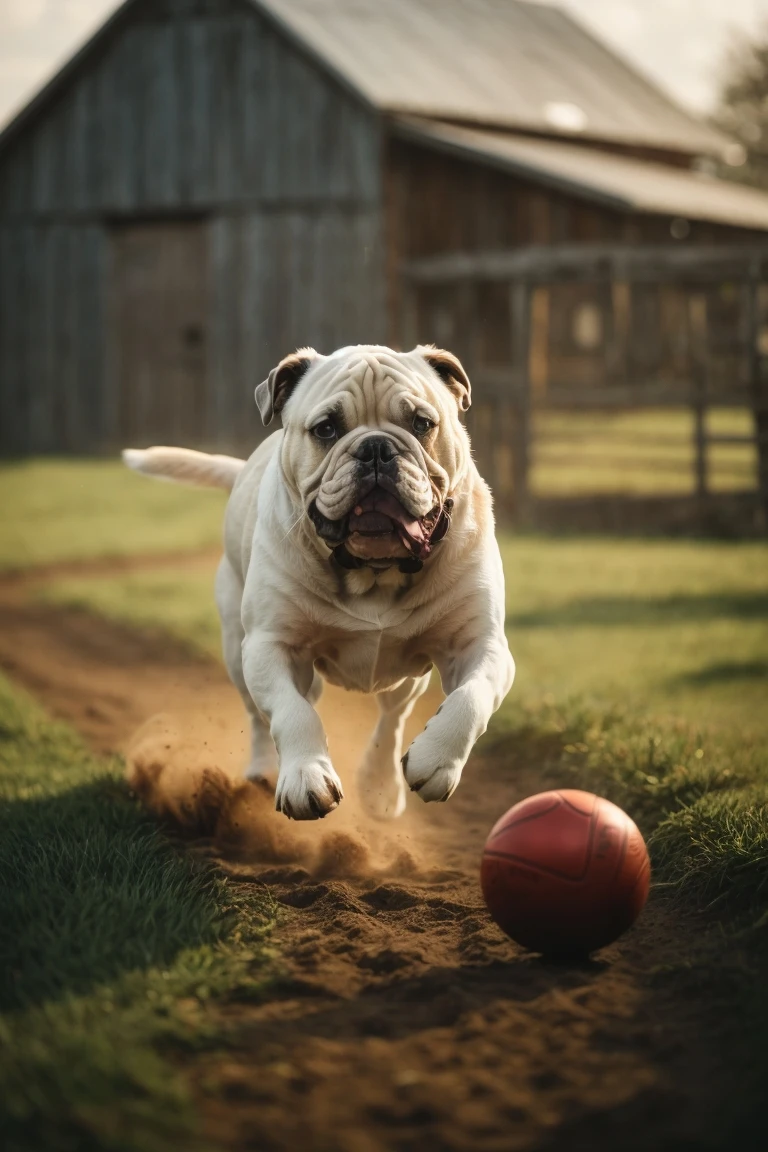Exercising an Olde English Bulldogge: How Much and What Type?

The Olde English Bulldogge is a recently developed breed intended to be a healthier, more active version of the modern English Bulldog. While not as exercise-intolerant as some bulldog breeds, Olde English Bulldogges do have specific exercise needs to stay fit and prevent obesity. This guide covers everything owners need to know about properly exercising this breed.
Overview of Olde English Bulldogge Exercise Needs
- Moderate energy levels requiring 20-40 minutes of daily exercise
- Benefit from multiple shorter walks versus one long session
- At risk for heat stroke - walking early morning/evening is best in warm climates
- Mental stimulation is just as important as physical exercise
- Prone to weight gain without proper diet and exercise
- Struggle with strenuous activities due to brachycephalic airway
- Require access to shade and water on walks to prevent overheating
Olde English Bulldogges need moderately-paced exercise tailored to their structural challenges. Focus is on keeping them lean and active for lifelong health.
Olde English Bulldogge Health Considerations
Olde English Bulldogges were developed to be more athletic than modern English Bulldogs. However, some breed health considerations still require attention during exercise:
- Brachycephalic airway syndrome - Struggle to breathe when overheated or exercising strenuously due to narrowed nostrils and elongated soft palate. At risk of collapsing from airway obstruction.
- Heat intolerance - At high risk of heat stroke due to poor heat dissipation. Need access to climate-controlled spaces.
- Joint problems - Hip and elbow dysplasia can develop. Don't over-walk puppies.
- Obesity - Prone to rapid weight gain leading to diabetes, arthritis, and breathing issues.
Monitor closely for signs of overexertion, overheating, lameness, or trouble breathing. Adjust activity accordingly.
Ideal Types of Exercise
The best types of exercise for Olde English Bulldogges include:
- Short, slower leash walks - 15-20 minutes max, 2-3 times daily. Gentle pace.
- Wandering yard time - Supervised time to mosey and sniff. Fenced yard ideal.
- Indoor play - Low impact play like toys, training games, hide and seek.
- Access to air conditioning - Must be able to cool off from heat/exercise
- Mental stimulation - Nosework, puzzles, training. Avoid boredom.
- Hydrotherapy - Swimming an ideal way to build strength and stamina.
Avoid intense exercise like jogging in hot weather. Let their natural exercise needs guide duration.
Walking Tips
Follow these tips for safe, effective walks:
- Stick to shorter 5-20 minute walks 1-2 times daily. Avoid marathon walk sessions.
- Monitor temperature and walk during cooler parts of day.
- Bring water on warm weather walks & offer regular water breaks.
- Walk at a relaxed pace - no straining or pulling at the leash.
- Watch closely for any wheezing, coughing, or signs of over-exertion.
- End walks immediately if breathing issues are observed.
- Use a front-clip harness to avoid neck strain from pulling.
- Cool down period after walks to regulate breathing before crating.
Proper walking pace and frequency will satisfy their exercise needs without risk of overheating.
Indoor Exercise & Play
Indoor play and training provides important activity when weather is too hot:
- Indoor fetch with soft toys - avoids high impact on joints
- Hide and seek - allows sniffing and searching
- Training sessions with food puzzles and commands
- Chew toys like frozen Kongs to occupy them when resting
- Food dispensing toys to provide mental stimulation
- Learning tricks and commands to engage their brains
- Short play sessions split up throughout the day
Prevent boredom and behavioral issues through indoor enrichment.
Signs Your Olde English Bulldogge Needs More Exercise
- Weight gain, especially around the chest and midsection
- Lack of interest in toys or play
- More difficult breathing or noisy panting
- Increased sleeping and low energy during awake time
- Destructiveness and chewing out of boredom
- Pacing and restlessness
- Pulling excessively on leash walks
Increase exercise duration and frequency if these signs of boredom, weight gain, or restlessness occur.
Risks of Over-exercising
Be alert for signs you’ve overdone activity:
- Heavy open mouth panting
- Nostril flaring
- Extreme fatigue
- Collapsing
- Gagging/choking sounds
- Blue/purplish gums or tongue
Over-exercising can quickly lead to heat stroke. End activity immediately and begin cooling measures if you observe distress.
The ideal exercise regime keeps your Olde English Bulldogge fit and active without taxing their airway. While they require slightly less exercise than other breeds, sticking to a consistent routine is key to preventing obesity and boredom-related behaviors. Work with your veterinarian to tailor activities for your dog’s needs.